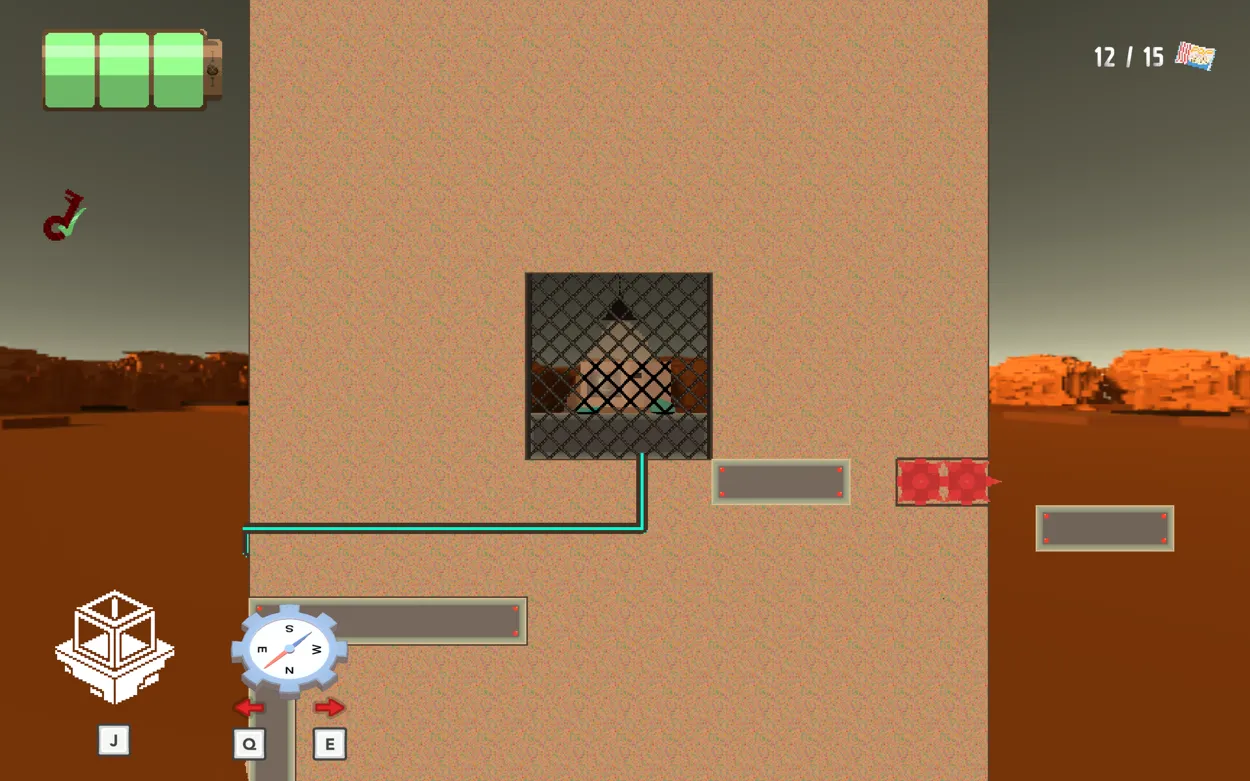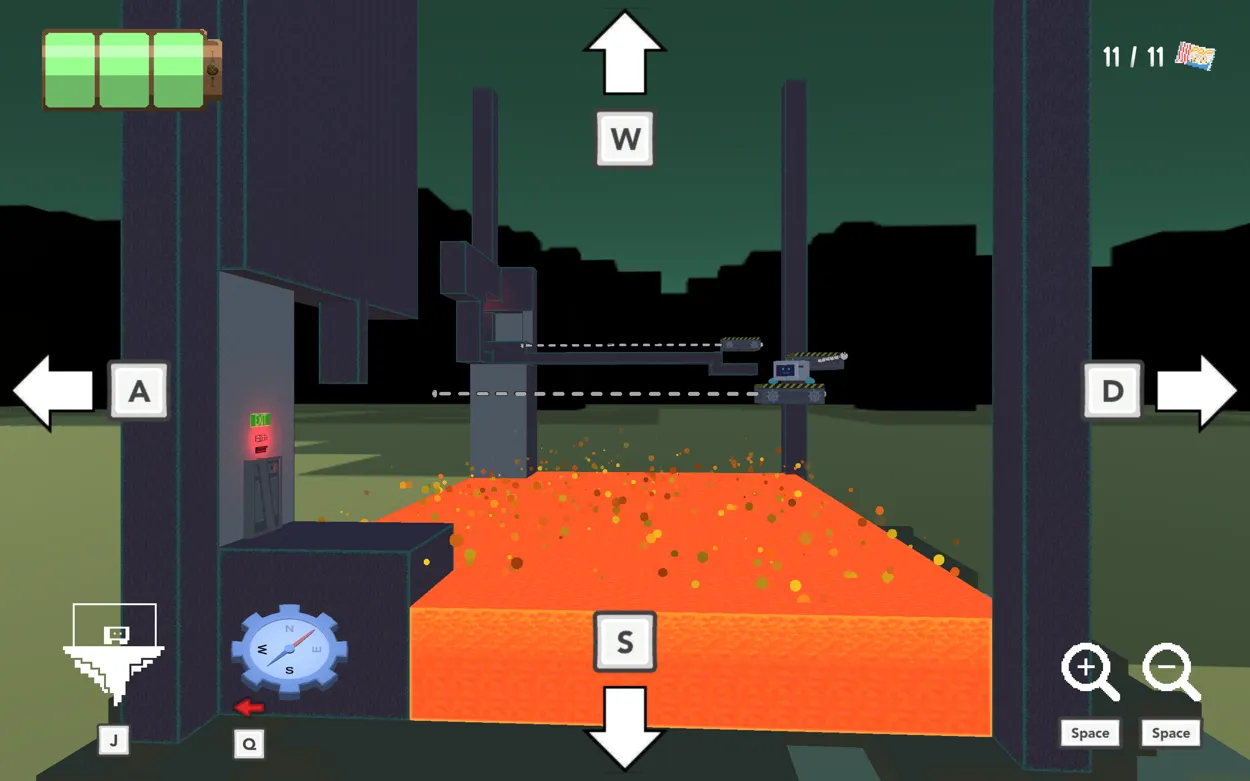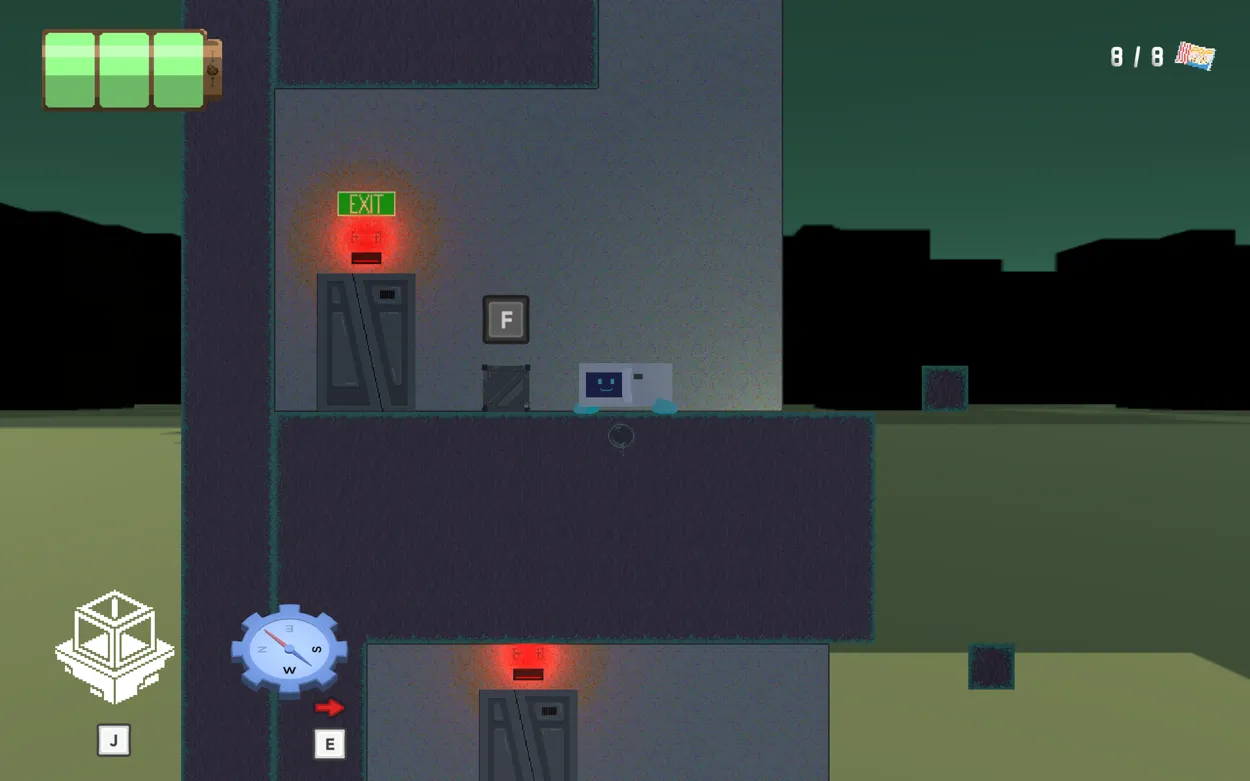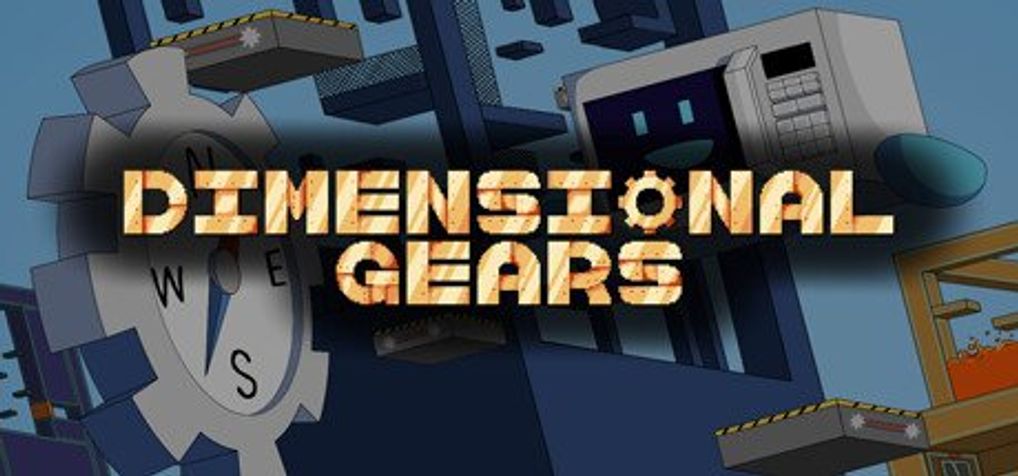Dimensional Gears
There are a lot of inexpensive puzzle-platformers on Steam. This is because they’re among the easiest games to make. You set up a few platforms, ask the player to understand what’s being asked of them, and turn them loose. It’s easy to build, but also, hard to make interesting. As a result, most puzzle games have some sort of gimmick they toss into the equation. It might be beautiful art, like The Bridge . Some add weird mechanics that twist and turn the world, like, um, The Bridge . In many cases, this works to create an interesting, multidimensional puzzle, while in others, it falls flat and just feels rote.
Dimensional Gears is an interesting case, as it both adds an interesting dynamic while still managing to feel a bit featureless.
 Despite all my rage, I am still just a…toaster…in a…you know what? No. I declare for all the world that I am not a toaster in a cage.
Despite all my rage, I am still just a…toaster…in a…you know what? No. I declare for all the world that I am not a toaster in a cage.
Dimensional Gears is a puzzle-platformer. You play as a toaster, awkwardly hopping from platform to platform, rescuing movie tickets, grabbing keys, and scooting around spikes, lava, and other hazards. Why, exactly, you are playing as a toaster is unclear - the game’s description says this is a dystopian steampunk future where sentient appliances are the only beings left, but I spent enough time as a 90s kid to know that it can’t really be a dystopia if a happy toaster is coming to the rescue - but this is the reality you live in. The impact of the story is essentially nil, with the majority of the focus being on the mechanics and puzzles themselves.
Mechanically, Dimensional Gears is deceptively simple. At first glance, the happy little toaster is hopping from platform to platform, collecting keys and dodging hazards along the way. However, Dimensional Gears adds an interesting twist. While it presents itself as a two-dimensional platformer, the map the player is navigating is a three-dimensional one, visible from one facet at a time. To fully navigate it, the player must twist and turn reality, shifting which facet they’re viewing at any given point, and navigating further from there. It’s an interesting mechanic, and one that adds quite a bit of character to the game.
 Despite all my rage, I am still just a toaster about to get dropped into lava.
Despite all my rage, I am still just a toaster about to get dropped into lava.
One consequence of being a 2D object navigating a 3D space is that it forces the player to reconsider and remap levels in their head. Part of the challenge becomes not only navigating the level, but actually understanding what it is, and what steps are required to hit each point. While the game provides a mechanic to be able to view the level in its entirety, I found the game to be much more fun when I didn’t use it, instead, navigating the space based on my idea of what was going on, and piecing together the level design from there. While the level designs themselves are nothing particularly special, this facet-jumping provides a way for them to become a bit more special and interesting, and for the player to need to rethink their approach to the game.
 Okay, but real talk: I’m pretty sure that’s a toaster oven, not a toaster.
Okay, but real talk: I’m pretty sure that’s a toaster oven, not a toaster.
That said, this is clearly a first game on the part of the developers, and one with a lot of rough edges begging to smoothed out. The hit box on the toaster and various hazards seemed variable, for example, sometimes causing me to hit a hazard I didn’t think I was touching. Jumping is less a jump and more a semi-motivated lob that may or may not actually reach its goal at the end.
Most frustrating, though, was that, coupled with sometimes awkward movement and variable hit boxes, the idea of level design took a leaf directly from Chip’s Challenge . Levels must be done in a single, perfect shot, or not at all. While the levels are short enough that this should, in theory, work, in practice, that combination of sometimes wonky controls and hitboxes meant I was trying the same level over and over, not because I hadn’t solved the puzzle, but because I couldn’t get the platforming to work within the limited confines provided to me. This sort of awkwardness can rapidly become the bane of any puzzle game, and it definitely greatly decreased my enjoyment of this one.
Still, despite it’s awkwardness, there’s a charm to Dimensional Gears. Its barebones nature lets the player focus on the puzzles, and especially the dimensional twisting mechanics. There are good ideas in this one that make up for some of the wonkiness of the gameplay itself. It may not be a stellar game, but it is still a charming little excursion alongside a manic little toaster.
Developer: Discontinued Developers
Genre: Puzzle, Platformer
Year: 2022
Country: United States
Language: English
Play Time: 30 Minutes
Youtube: https://youtu.be/JakjHntcVq0
